#women of fantasy
Text

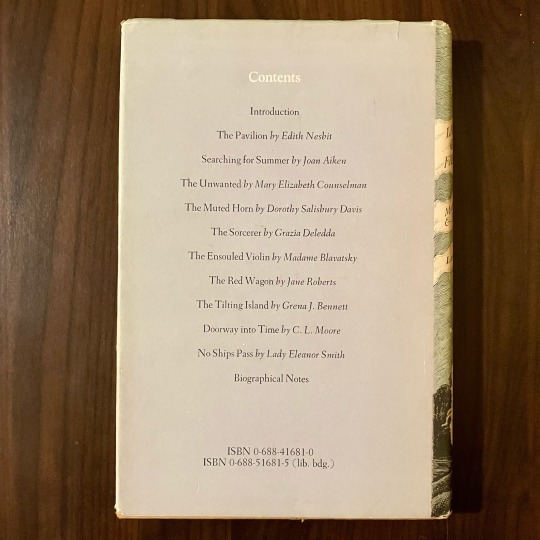
via @curiousvolumes
#edward gorey#women of horror#women of fantasy#ladies of fantasy#women horror writers#vintage horror#vintage gothic#vintage books#classic horror#curiousvolumes
11 notes
·
View notes
Text

I'm doing it gang, I've spent stupider gardening money before like when I dropped $300 on shade loving perennial bulbs only to learn they were also plants that rotted with wet feet and all immediately died in my swampy gumbo soil
I'm buying two firefly petunias. I've never grown petunias much because where I live they're a winter annual but fuck it I'll grow them as an indoor plant I certainly have the sun to do it.
They're supposed to ship to me in April, I'll report back on if they immidiately die or this is the coolest thing I own. My biochemical engineering design project was using a similar chemical pathway to modify bacteria to glow in the presence of specific toxins so I absolutely need glowing petunias in my window box
14K notes
·
View notes
Text
10 Ways to Add Sizzle to Your Boring Writing
Writing that sizzles captures the reader's attention and keeps them engaged from start to finish. Whether you're an experienced writer or just starting out, there are several techniques you can use to make your writing more exciting and dynamic. Here are ten detailed ways to add sizzle to your boring writing:
1. Use Vivid Descriptions
Vivid descriptions bring your writing to life by creating a rich, immersive experience for the reader. Instead of relying on generic or bland language, use specific details that appeal to the senses. Describe how things look, sound, smell, taste, and feel to paint a vivid picture.
In Detail:
Visual Descriptions: Use color, shape, and size to create a mental image. Instead of saying "The car was old," say "The rusty, olive-green car wheezed as it pulled into the driveway."
Sound Descriptions: Incorporate onomatopoeia and detailed sound descriptions. Instead of "The music was loud," say "The bass thumped, and the high notes pierced through the night air."
Smell and Taste Descriptions: Use sensory language. Instead of "The food was good," say "The aroma of roasted garlic and herbs filled the room, and the first bite was a burst of savory flavors."
2. Show, Don't Tell
"Show, don't tell" is a fundamental writing principle that means revealing information through actions, thoughts, dialogue, and sensory details rather than straightforward exposition. This approach makes your writing more engaging and allows readers to experience the story.
In Detail:
Actions Over Exposition: Instead of telling the reader "Jane was scared," show her fear through her actions: "Jane's hands trembled as she fumbled with the lock, her breath coming in shallow gasps."
Dialogue: Use conversations to reveal character traits and emotions. Instead of "John was angry," show his anger through his words and tone: "John's voice was a low growl as he said, 'I can't believe you did this.'"
Internal Thoughts: Reveal characters' inner worlds. Instead of "Emma felt relieved," show her relief: "Emma let out a long breath she didn't realize she was holding and sank into the chair, a smile tugging at her lips."
3. Create Relatable Characters
Relatable characters are crucial for keeping readers invested in your story. Characters should have depth, including strengths, weaknesses, desires, and fears. When readers see aspects of themselves in your characters, they're more likely to care about their journeys.
In Detail:
Character Flaws: Give your characters realistic flaws. A perfect character can be boring and unrelatable. Show how these flaws impact their decisions and relationships.
Character Arcs: Ensure your characters grow and change throughout the story. A well-crafted character arc can turn a good story into a great one.
Background and Motivations: Provide backstories and motivations. Why does your character act the way they do? What drives them? This adds depth and makes them more three-dimensional.
4. Add Dialogue
Dialogue can break up large blocks of text and make your writing more dynamic. It reveals character, advances the plot, and provides opportunities for conflict and resolution. Ensure your dialogue sounds natural and serves a purpose.
In Detail:
Natural Speech: Write dialogue that sounds like real conversation, complete with interruptions, pauses, and colloquial language. Avoid overly formal or stilted speech.
Purposeful Dialogue: Every line of dialogue should have a purpose, whether it's revealing character, advancing the plot, or building tension. Avoid filler conversations that don't add to the story.
Subtext: Use subtext to add depth. Characters might say one thing but mean another, revealing their true feelings through what they don't say directly.
5. Use Strong Verbs
Strong verbs make your writing more vivid and energetic. They convey action and emotion effectively, making your sentences more powerful and engaging.
In Detail:
Action Verbs: Choose verbs that show precise actions. Instead of "She went to the store," say "She dashed to the store."
Avoid Weak Verbs: Replace weak verbs and verb phrases with stronger alternatives. Instead of "He was walking," say "He strode."
Emotionally Charged Verbs: Use verbs that convey specific emotions. Instead of "She was sad," say "She wept."
6. Vary Sentence Structure
Varying sentence structure keeps your writing interesting and prevents it from becoming monotonous. Mix short, punchy sentences with longer, more complex ones to create a rhythm that engages readers.
In Detail:
Short Sentences for Impact: Use short sentences to create tension, urgency, or emphasize a point. "He stopped. Listened. Nothing."
Complex Sentences for Detail: Use longer sentences to provide detailed descriptions or explain complex ideas. "As the sun set behind the mountains, the sky transformed into a canvas of oranges, pinks, and purples, casting a warm glow over the serene landscape."
Combine Different Structures: Mix simple, compound, and complex sentences to maintain a natural flow. Avoid repetitive patterns that can make your writing feel flat.
7. Introduce Conflict
Conflict is the driving force of any story. It creates tension and keeps readers invested in the outcome. Without conflict, your story can become stagnant and uninteresting.
In Detail:
Internal Conflict: Characters should struggle with internal dilemmas, fears, and desires. This adds depth and relatability.
External Conflict: Introduce obstacles and challenges that characters must overcome. This can be other characters, societal pressures, or natural forces.
Resolution: Show how conflicts are resolved, leading to character growth and plot progression. Ensure resolutions feel earned and satisfying.
8. Use Metaphors and Similes
Metaphors and similes add creativity and depth to your writing. They help readers understand complex ideas and emotions by comparing them to familiar experiences.
In Detail:
Metaphors: Directly state that one thing is another to highlight similarities. "Time is a thief."
Similes: Use "like" or "as" to make comparisons. "Her smile was like sunshine on a rainy day."
Avoid Clichés: Create original comparisons rather than relying on overused phrases. Instead of "busy as a bee," find a fresh analogy.
9. Create Suspense
Suspense keeps readers on the edge of their seats, eager to find out what happens next. Use foreshadowing, cliffhangers, and unanswered questions to build tension and anticipation.
In Detail:
Foreshadowing: Drop subtle hints about future events. This creates anticipation and a sense of inevitability.
Cliffhangers: End chapters or sections with unresolved tension or unanswered questions to compel readers to keep going.
Pacing: Control the pace of your story to build suspense. Slow down for crucial moments and speed up during action scenes.
10. Edit Ruthlessly
Great writing often emerges during the editing process. Be willing to cut unnecessary words, tighten your prose, and refine your sentences. Editing improves clarity, pace, and overall readability.
In Detail:
Cut Redundancies: Remove unnecessary words and repetitive phrases. "In my opinion, I think" can be reduced to "I think."
Focus on Clarity: Ensure each sentence conveys its intended meaning clearly and concisely.
Proofread: Check for grammar, punctuation, and spelling errors. A polished manuscript reflects professionalism and attention to detail.
#writeblr#writing#creative writing#thewriteadviceforwriters#writing tips#writers block#on writing#writers and poets#how to write#novel writing#writing blog#writing advice#writer#authoradvice#author#book writing#women writers#fiction#authors on tumblr#novelist#writer stuff#female writers#fiction writing#fantasy novel#novel
5K notes
·
View notes
Text

Fake complicated women when a real complicated woman pulls up !
#fhjy spoilers#d20#fantasy high#fhjy#esmeamesart#dimension 20#fantasy high junior year#I fucked screamed at the ending u don’t understand she’s the first fh character I drew#kalina#kalina fantasy high#cassandra fantasy high#nightmare king fantasy high#fh#fuck it#complicated women#dnd#tabaxi#rogue#evil women#cunty women#fantasy high fanart#catgirl
4K notes
·
View notes
Text
“You just wrote your medieval fantasy setting to have medieval gender roles and homophobia and prejudice because you secretly fantasize about being able to be sexist and homophobic in a land with no PoC without any pushback! It’s fantasy, there’s dragons and wizards, it doesn’t have to have prejudice unless you, the writer, want it like that! In *my* D&D setting, there’s no sexism or homophobia, so that gay transgender women of all races can be holy knights fighting to protect the good kingdom from the endless hordes of the evil dark race that has threatened its borders for a thousand years!”
#writing#medieval fantasy#medieval women#fantasy#d&d#d&d 5e#dungeons and dragons#ttrpg#books#novels#worldbuilding
5K notes
·
View notes
Text
she do be hitting that yoinky sploinky

#art#drawing#digital art#fantasy#bg3#baldurs gate 3#baldurs gate fanart#baldurs gate iii#karlach#bg3 karlach#baldurs gate karlach#buff girls#buff women#tiefling#dnd#dungeons and dragons#baldurs gate#oh my god i love her#silly liitle dance
11K notes
·
View notes
Text
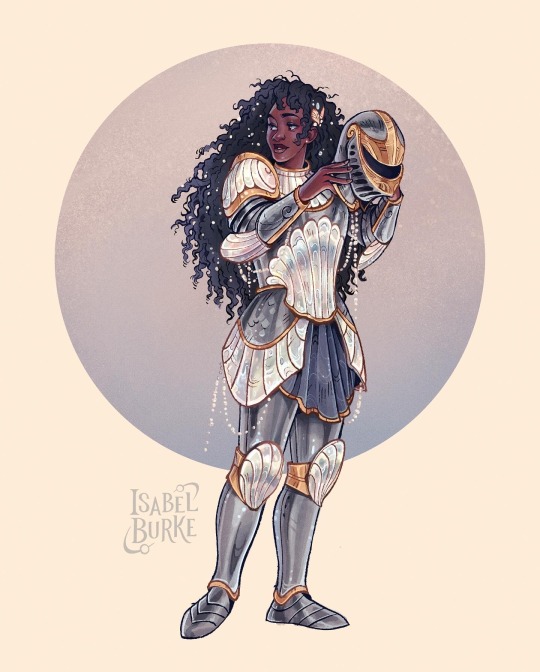
lady from the ocean 🌊🐚
✦ find me on instagram @the.flightless.artist ✦
#art#illustration#digital art#drawing#digital illustration#procreate app#digital drawing#digital artist#procreate art#ipad pro#women in armor#fantasy character design#character design#lady knight#knight art#original character#ocean knight#armor design
4K notes
·
View notes
Text
Thank you baulders gate 3 for letting us make the men just as slutty

#baulders gate 3#gale of waterdeep#like im just enjoying the fact the insane women outfits in fantasy games is also applied to men if they equip the same armor
17K notes
·
View notes
Text
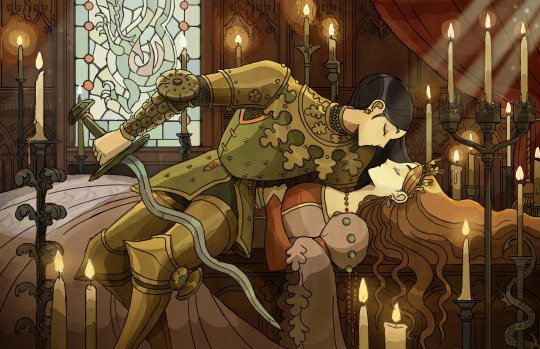
Celebrating Valentine's day with the first in what will be a series of pieces this year illustrating the sleeping beauty fairytale!
EDIT: did a slight update on this piece to make it warmer and add a bit more light and shadow~!
6K notes
·
View notes
Text

all RIGHT:
Why You're Writing Medieval (and Medieval-Coded) Women Wrong: A RANT
(Or, For the Love of God, People, Stop Pretending Victorian Style Gender Roles Applied to All of History)
This is a problem I see alllll over the place - I'll be reading a medieval-coded book and the women will be told they aren't allowed to fight or learn or work, that they are only supposed to get married, keep house and have babies, &c &c.
If I point this out ppl will be like "yes but there was misogyny back then! women were treated terribly!" and OK. Stop right there.
By & large, what we as a culture think of as misogyny & patriarchy is the expression prevalent in Victorian times - not medieval. (And NO, this is not me blaming Victorians for their theme park version of "medieval history". This is me blaming 21st century people for being ignorant & refusing to do their homework).
Yes, there was misogyny in medieval times, but 1) in many ways it was actually markedly less severe than Victorian misogyny, tyvm - and 2) it was of a quite different type. (Disclaimer: I am speaking specifically of Frankish, Western European medieval women rather than those in other parts of the world. This applies to a lesser extent in Byzantium and I am still learning about women in the medieval Islamic world.)
So, here are the 2 vital things to remember about women when writing medieval or medieval-coded societies
FIRST. Where in Victorian times the primary axes of prejudice were gender and race - so that a male labourer had more rights than a female of the higher classes, and a middle class white man would be treated with more respect than an African or Indian dignitary - In medieval times, the primary axis of prejudice was, overwhelmingly, class. Thus, Frankish crusader knights arguably felt more solidarity with their Muslim opponents of knightly status, than they did their own peasants. Faith and age were also medieval axes of prejudice - children and young people were exploited ruthlessly, sent into war or marriage at 15 (boys) or 12 (girls). Gender was less important.
What this meant was that a medieval woman could expect - indeed demand - to be treated more or less the same way the men of her class were. Where no ancient legal obstacle existed, such as Salic law, a king's daughter could and did expect to rule, even after marriage.
Women of the knightly class could & did arm & fight - something that required a MASSIVE outlay of money, which was obviously at their discretion & disposal. See: Sichelgaita, Isabel de Conches, the unnamed women fighting in armour as knights during the Third Crusade, as recorded by Muslim chroniclers.
Tolkien's Eowyn is a great example of this medieval attitude to class trumping race: complaining that she's being told not to fight, she stresses her class: "I am of the house of Eorl & not a serving woman". She claims her rights, not as a woman, but as a member of the warrior class and the ruling family. Similarly in Renaissance Venice a doge protested the practice which saw 80% of noble women locked into convents for life: if these had been men they would have been "born to command & govern the world". Their class ought to have exempted them from discrimination on the basis of sex.
So, tip #1 for writing medieval women: remember that their class always outweighed their gender. They might be subordinate to the men within their own class, but not to those below.
SECOND. Whereas Victorians saw women's highest calling as marriage & children - the "angel in the house" ennobling & improving their men on a spiritual but rarely practical level - Medievals by contrast prized virginity/celibacy above marriage, seeing it as a way for women to transcend their sex. Often as nuns, saints, mystics; sometimes as warriors, queens, & ladies; always as businesswomen & merchants, women could & did forge their own paths in life
When Elizabeth I claimed to have "the heart & stomach of a king" & adopted the persona of the virgin queen, this was the norm she appealed to. Women could do things; they just had to prove they were Not Like Other Girls. By Elizabeth's time things were already changing: it was the Reformation that switched the ideal to marriage, & the Enlightenment that divorced femininity from reason, aggression & public life.
For more on this topic, read Katherine Hager's article "Endowed With Manly Courage: Medieval Perceptions of Women in Combat" on women who transcended gender to occupy a liminal space as warrior/virgin/saint.
So, tip #2: remember that for medieval women, wife and mother wasn't the ideal, virgin saint was the ideal. By proving yourself "not like other girls" you could gain significant autonomy & freedom.
Finally a bonus tip: if writing about medieval women, be sure to read writing on women's issues from the time so as to understand the terms in which these women spoke about & defended their ambitions. Start with Christine de Pisan.
I learned all this doing the reading for WATCHERS OF OUTREMER, my series of historical fantasy novels set in the medieval crusader states, which were dominated by strong medieval women! Book 5, THE HOUSE OF MOURNING (forthcoming 2023) will focus, to a greater extent than any other novel I've ever yet read or written, on the experience of women during the crusades - as warriors, captives, and political leaders. I can't wait to share it with you all!
#watchers of outremer#medieval history#the lady of kingdoms#the house of mourning#writing#writing fantasy#female characters#medieval women#eowyn#the lord of the rings#lotr#history#historical fiction#fantasy#writing tip#writing advice
30K notes
·
View notes
Text

not the step siblings, just the siblings that stepped up
(so excited for junior year finale prt 1!!!)
#i needed an icon for this blog and these two own my entire heart#bard siblings! the coolest kids in school! the doofiest teenz alive! Complicated Women!#fig faeth#figuroth faeth#fabian seacaster#fabian aramais seacaster#fantasy high#dimension 20#fantasy high junior year#fhjy#ktruth art#ktruth posts
2K notes
·
View notes
Text

Reblog if you wanna see what's down there 😜
Telegram :@isabella7189
#transgender#gay#queer#trans#transsexual#trans is beautiful#transgirl#trans pride#pansexual#fem#trans femboy#trans femme#trans feminine#gay love#gay faggot#gay pride#gay art#gayboy#trans gay#trans girl#gay fantasy#tumblr#trans girls#trans women are beautiful#trans gender#trans goddess#femme lesbian#lesbian#feminine sissy#queer femme
1K notes
·
View notes
Text

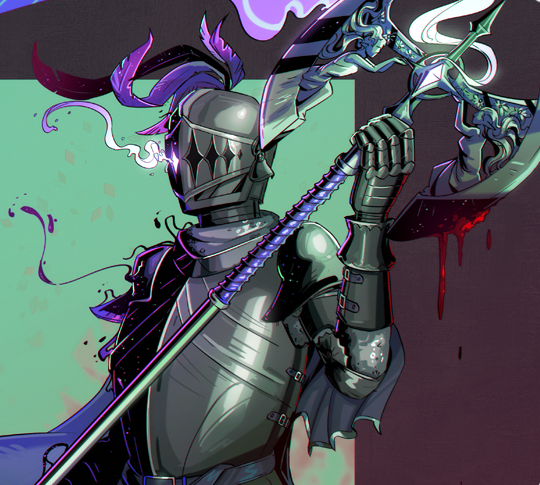
I stan scary undead women clad in full armor- And @legionnaire-r 's Cat (Short for Guardian of the Catacombs) was a perfect fit. She's a drow knight~ (please do look at that axe, that one took a bunch of work-)
#drow#knight#fantasy#fantasy art#character design#undead#ttrpg#art#dark elf#digital art#syg2024#artists on tumblr#sygdomthings#elf#dungeons and dragons#dnd#Paladin#Armor#Fighter#women in armor
3K notes
·
View notes
Text





A princess and her knight. A magical morning with @sydney_lauren00
📸: @alexis.baker42
999 notes
·
View notes
Text
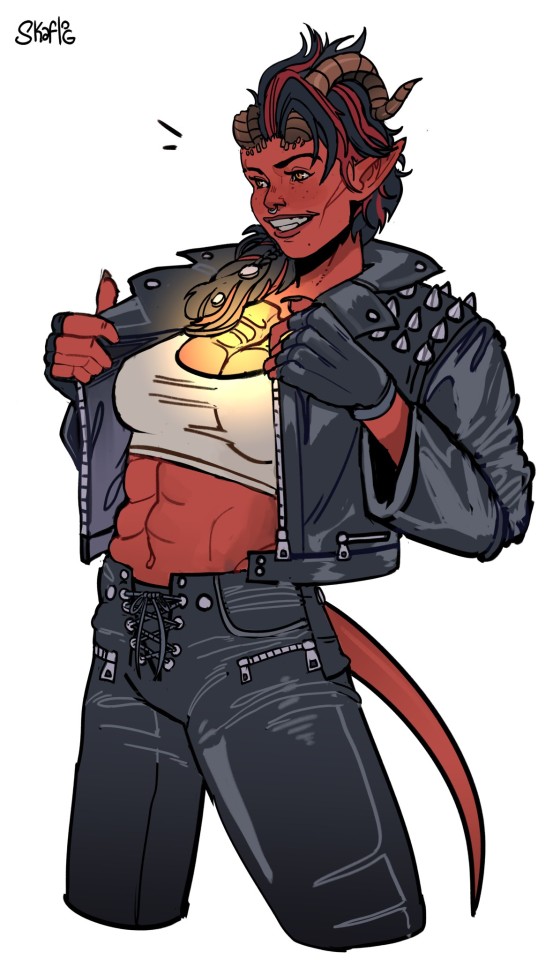
more karlach!!
#art#digital art#drawing#fantasy#dnd#bg3 karlach#baldurs gate karlach#karlach#bg3#baldurs gate 3#tiefling#leather jacket#karlach cliffgate#red skin#buff girls#buff women#buff woman#horns#god i love her#baldurs gate fanart#baldurs gate#baldur's gate 3#baldur's gate iii#dugeons and dragons
3K notes
·
View notes
Text

Total red by Courreges
#courreges#style#fashion#trends#minimal aesthetic#minimalism#minimal fashion#fashion photography#photo#photography#photooftheday#women's fashion#esthetics#aesthetics#minimalistic#urban style#urbanlife#newestcool#newest cool#urban#minimal#urban fantasy#minimalist style#photo of the week#photoshoot#editorial#outfit#urban photography#urban beauty#urban fiction
939 notes
·
View notes